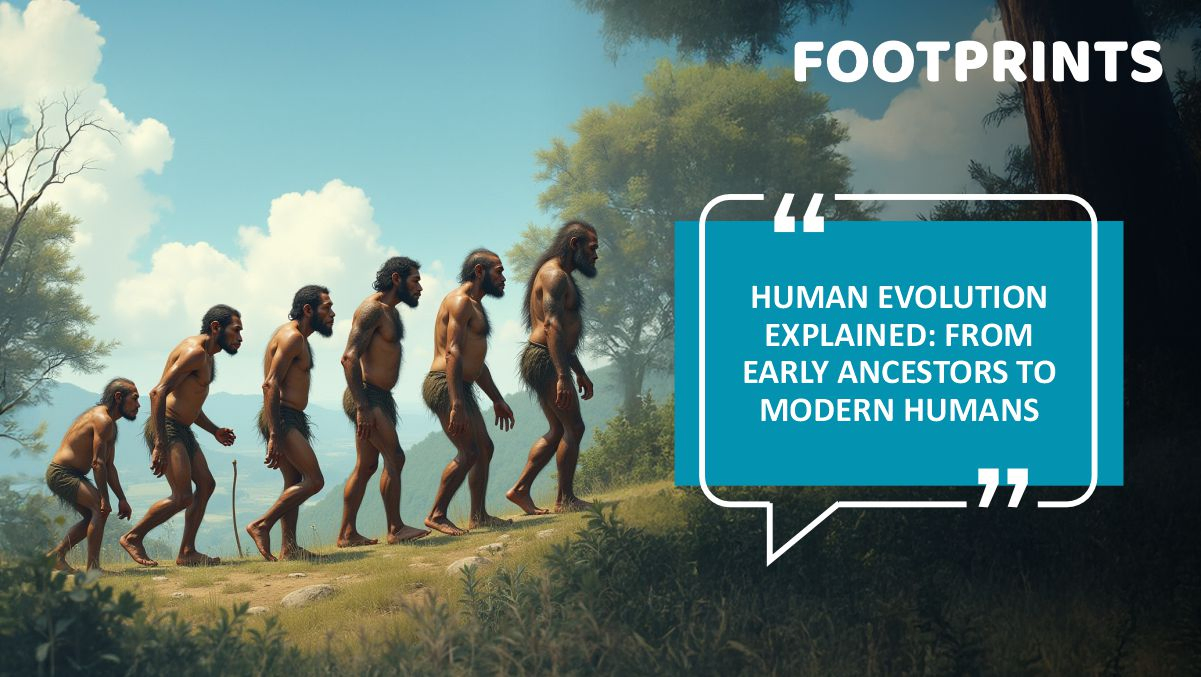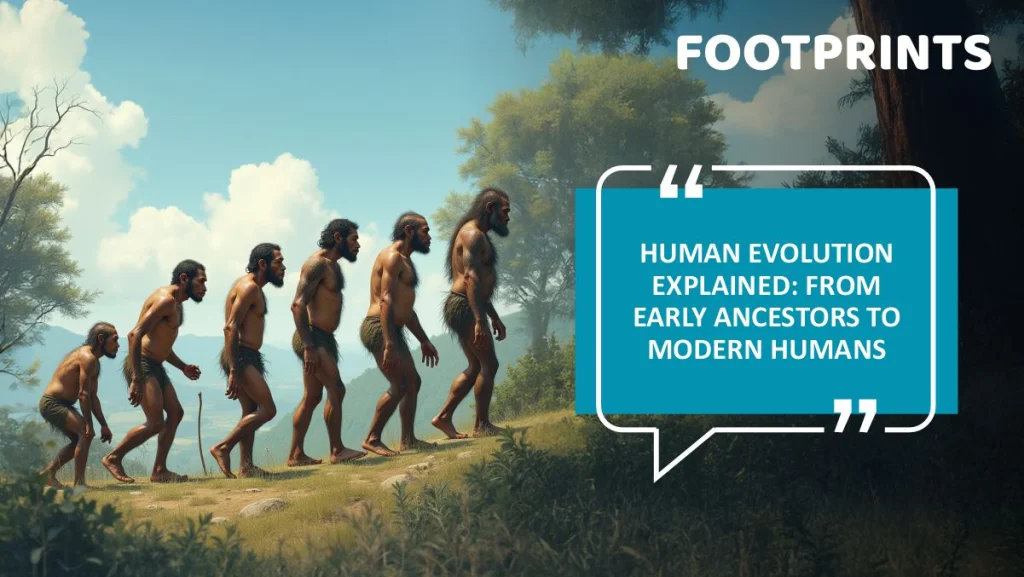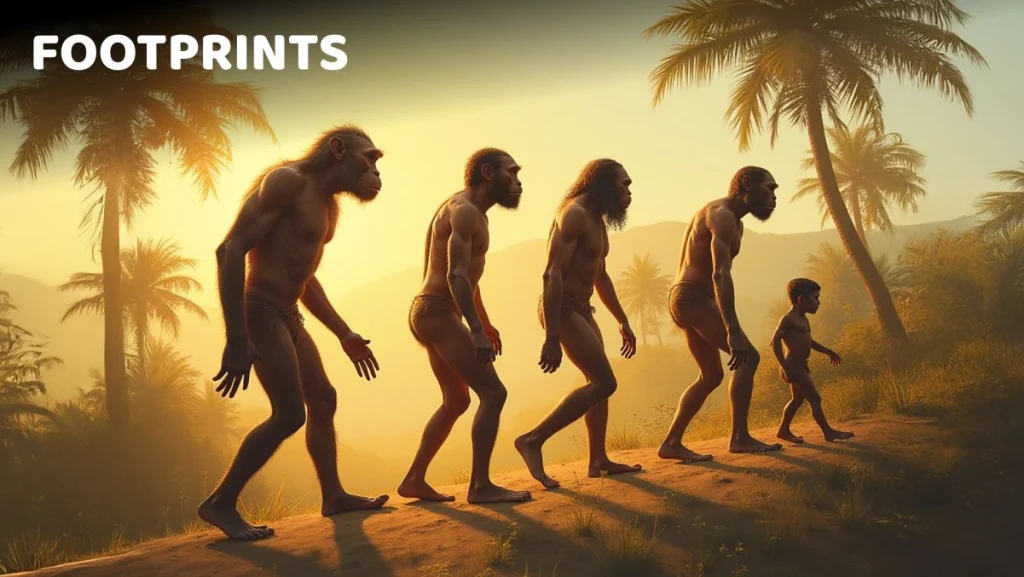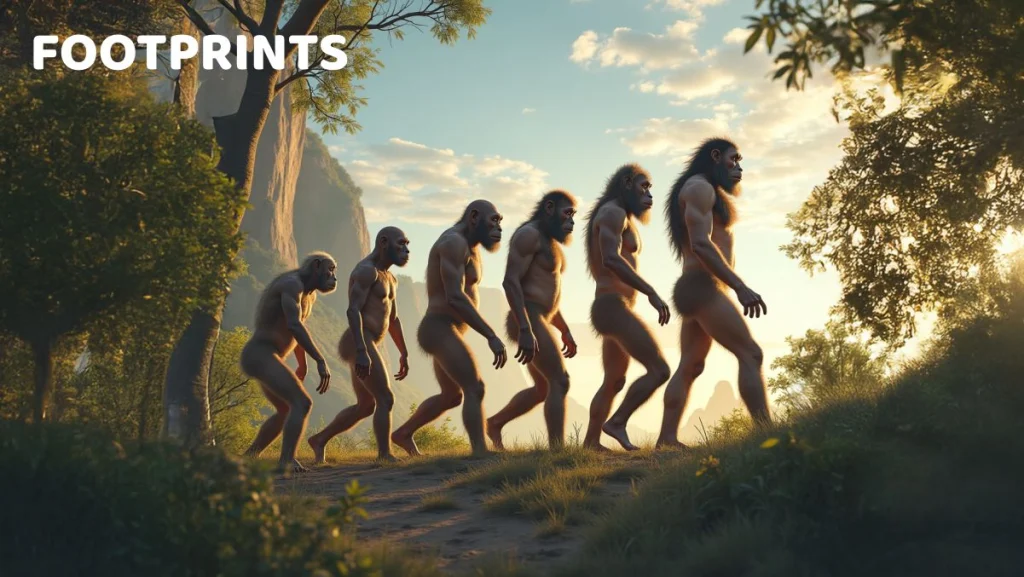

Have you ever looked at a child’s face and wondered how amazing God’s creation is? There are so many things that we as humans can do- think, talk, walk on two legs, laugh, build houses, paint, and even fly to space.
While it sounds like a grown-up topic, it is a fascinating story to share with your preschool child. The story of how we evolved from our early ancestors who walked the earth several million years ago. By doing this, you aren’t just feeding their curiosity; you are also helping them marvel at this universe and its creations.
So let us begin on a journey- one that talks of human evolution!
What is Human Evolution?
Simply put, “evolution” means change over time. So when we say “human evolution,” we’re talking about how humans have slowly changed and developed over millions of years.
We didn’t just appear the way we are now. Our bodies, brains, and behaviours slowly changed. Each of these changes helped us become better at surviving, solving problems, and working together.
Stages of Human Evolution
Our early ancestors can be traced back to 6 to 7 million years ago. Known as Hominins, they weren’t quite monkeys or apes, but they weren’t quite humans, either, as we know them now.
While they looked more like apes, they had started to walk on two legs

The Tool-Makers and Fire-Users
Next came the Homo Habilis that lived approximately 2.4 million years ago. They inhabited parts of sub-Saharan Africa and were one of the first humans known to make simple tools, such as those with sharp stone, to cut meat or crack nuts.
Next came the Homo Erectus, around 1.8 million years ago. These early humans were even better at walking upright and were the first to use fire. Fire gave them warmth, light, and the ability to cook food. Importantly, fire also offered safety as it kept wild animals away!
Spreading Around the World
Over time early humans began migrating to other parts of the world, such as Europe and Asia. As they travelled, they faced new climates and challenges, which made them resistant.
One of the most well-known ancient humans is Neanderthal Man (scientists call them Homo neanderthalensis). They lived in caves in Europe and were great hunters.
The Arrival of Modern Humans
Modern humans, such as the ones that inhabit the earth now, can be traced to about 300,000 years ago. They were called Homo sapiens. These humans had:
- Bigger brains
- Smarter thinking
- Better language and communication
- Creative minds
They started to paint on cave walls, build homes, and create tools from bones and stones. They also started working in groups and living in communities.
From Hunters to Builders
As humans kept evolving, they moved from being hunter-gatherers to living a more settled life. This is when they started to grow their own food. Instead of moving from place to place, they built homes, villages, and eventually cities.
This was the beginning of civilization and the road to the modern world that we live in today.
From tiny cave homes to tall skyscrapers, from hand-carved spears to rockets that go to Mars, the journey of human evolution is a story of the three C’s of curiosity, courage, and connection.
Conclusion: A Journey That is Still On
Human evolution is a long, fascinating journey. It is also one that is still unfolding. Today’s children will write the next chapter in this journey through their kindness, creativity, and care for the world.
So whether they’re building with blocks, painting with fingers, or asking big “Why?” questions, they’re already part of this incredible story.
For more such interesting facts, do stay tuned in to this space. At Footprints Playschool, we take great pride in fuelling the curiosity of our students and helping them grow up as well-rounded individuals.

FAQs
1. Are humans related to monkeys?
We didn’t come from monkeys, but we share a common ancestor with them. That means a very, very long time ago, monkeys, apes, and humans came from the same ancient family tree!
2. How long have humans been on Earth?
Modern humans (Homo sapiens) have been around for about 300,000 years. But human evolution started over 6 million years ago!
3. Where did the first humans live?
The first humans lived in Africa. That’s why Africa is often called the “cradle of humanity.”
4. Did early humans live in houses?
Not at first. They lived in caves, huts, or out in nature. Later, as farming began, they started building simple homes and villages.
5. What did early humans eat?
They ate fruits, nuts, roots, meat, and anything they could find. Later, they learned to cook food using fire, and eventually to grow their own crops.
6. What is the biggest difference between early humans and us?
The biggest difference is in our brains! Modern humans think, imagine, and communicate in more complex ways. But early humans laid the foundation for everything we do today.
7. Why is it important to learn about human evolution?
Because it helps us understand who we are, where we come from, and how we’ve grown as a species. It teaches kids about respect for others, diversity, and the beauty of change over time.
8. Are we still evolving?
Yes, in small ways! Evolution never really stops. Our bodies and behaviors continue to change slowly based on our environment and lifestyles.
9. Can children learn about evolution?
Absolutely! In fact, children love stories, and the story of evolution is a real-life adventure that helps them understand science, history, and themselves.
10. What can we learn from early humans?
We can learn about resilience, teamwork, curiosity, and how humans have always adapted to new challenges. It shows us that learning, growing, and caring for one another are deeply human things.
Usman is a seasoned Performance Marketing Professional and content writer with over 8 years of experience in the education industry. With a passion for driving results and creating compelling narratives, Usman specializes in crafting data-driven marketing strategies and insightful content that resonates with educational institutions and their audiences. His expertise in performance marketing, combined with his in-depth understanding of the education sector, allows him to bridge the gap between marketing initiatives and student engagement effectively. Whether through targeted campaigns or educational content, Usman helps brands enhance their online presence and achieve measurable growth.

